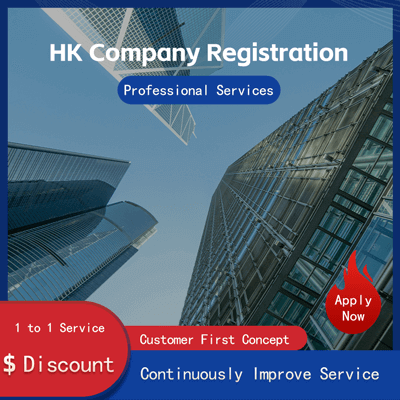
In-Depth Analysis How to View Equity Structure of U.S. Companies
Deep Dive How to Investigate the Equity Structure of U.S. Companies
Understanding the equity structure of a company is crucial for investors, stakeholders, and even employees who want to know how power is distributed within a corporation. In the United States, companies often disclose this information publicly through regulatory filings and other official channels. This article will guide you through the process of investigating the equity structure of U.S. companies while referencing relevant news and resources.

The equity structure of a company refers to the breakdown of ownership among different groups, including shareholders, institutional investors, and private entities. Publicly traded companies in the U.S. are required to file reports with the Securities and Exchange Commission SEC, which provides transparency into their financials and ownership details. One of the most important documents is the Form 10-K, an annual report that outlines the company's financial performance, risks, and governance structure. Investors can find detailed information about major shareholders, including the percentage of shares they own and any changes in their holdings over time.
According to recent reports from Bloomberg, many large institutions such as mutual funds and pension plans have become key players in the equity landscape. These entities often hold significant stakes in publicly traded companies, sometimes exceeding 5% of total shares outstanding. For example, BlackRock and Vanguard are two of the largest investment firms globally, managing trillions of dollars in assets. Their influence extends beyond mere ownership; they often engage in shareholder activism, pushing for corporate governance reforms or sustainable practices. Understanding these dynamics helps investors gauge the level of control exercised by various stakeholders.
Another critical aspect of analyzing equity structures involves looking at insider ownership. Insider ownership refers to the proportion of stock held by executives, directors, and other insiders within a company. High levels of insider ownership can indicate confidence in the business model, as insiders stand to benefit directly from long-term success. Conversely, low insider ownership might raise concerns about misaligned incentives between management and external shareholders. A case in point was discussed in The Wall Street Journal earlier this year, where tech giants like Apple and Microsoft boasted high insider ownership ratios, reinforcing investor trust in leadership.
In addition to SEC filings, several online platforms provide easy access to equity data for U.S. companies. Yahoo Finance and Google Finance allow users to view shareholdings and institutional ownership percentages at no cost. Moreover, specialized services such as S&P Capital IQ offer more comprehensive insights into the composition of equity structures across industries. These tools enable individuals to perform detailed analyses without requiring advanced financial expertise.
For those seeking deeper insights, attending shareholder meetings or reviewing proxy statements Form DEF 14A can yield valuable information. Proxy statements outline voting rights associated with each class of shares, helping clarify whether certain groups possess disproportionate influence over decision-making processes. News outlets frequently cover major developments during these events, providing context on emerging trends in corporate governance.
It’s worth noting that private companies do not face the same disclosure requirements as public ones, making it harder to assess their equity structures. However, mergers and acquisitions involving private firms sometimes necessitate the release of detailed documentation, offering glimpses into their ownership patterns. Private equity funds and venture capitalists play pivotal roles here, often acquiring controlling interests in startups or established businesses.
In conclusion, examining the equity structure of U.S. companies requires familiarity with regulatory frameworks and accessible resources. By leveraging SEC filings, financial websites, and industry reports, anyone can gain meaningful insights into how power is distributed within corporations. As global markets continue evolving, staying informed about equity structures remains essential for navigating investment opportunities effectively. Whether you're evaluating a potential stock purchase or assessing a company's commitment to ethical practices, understanding its ownership landscape empowers smarter decisions.
Still have questions after reading this? 26,800+ users have contacted us. Please fill in and submit the following information to get support.

Service Scope
More


 ONE
ONE
Customer Reviews
Small *** Table
December 12, 2024The experience was very good. I was still struggling to compare it with other companies. I went to the site a few days ago and wanted to implement it as soon as possible. I didn't expect that everything exceeded my expectations. The company is very large, with several hundred square meters. The employees are also dedicated and responsible. There is also a wall of certificates. I placed an order on the spot. It turned out that I did not make a wrong choice. The company's service attitude is very good and professional. The person who contacted me explained various things in detail in advance. After placing the order, the follow-up was also very timely, and they took the initiative to report the progress to me. In short, I am very satisfied and recommend this company!
Lin *** e
December 18, 2024When I first consulted customer service, they recommended an agent to me. They were very professional and patient and provided excellent service. They answered my questions as they came in. This 2-to-1 service model is very thoughtful. I had a lot of questions that I didn’t understand, and it’s not easy to register a company in Hong Kong. Fortunately, I have you.
t *** 7
December 19, 2024I originally thought that they only did mainland business, but I didn’t expect that they had been doing Hong Kong business and were doing very well. After the on-site interview, I decided to ask them to arrange the registration of my Hong Kong company. They helped me complete it very quickly and provided all the necessary information. The efficiency was awesome. It turns out that professional things should be done by professionals.👍
b *** 5
December 16, 2024In order to register a company in Hong Kong, I compared many platforms and stores and finally chose this store. The merchant said that they have been operating offline for more than 10 years and are indeed an old team of corporate services. The efficiency is first-class, and the customer service is also very professional.